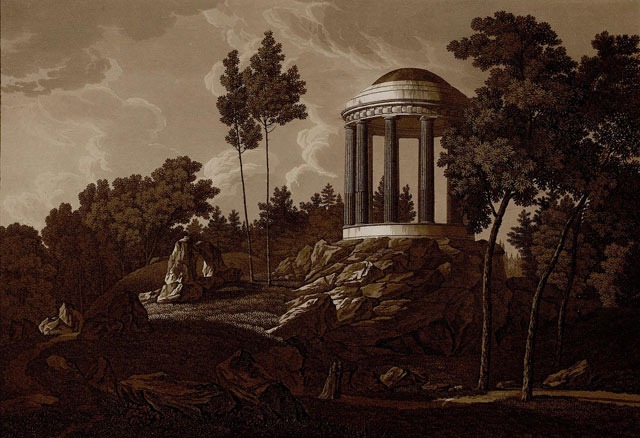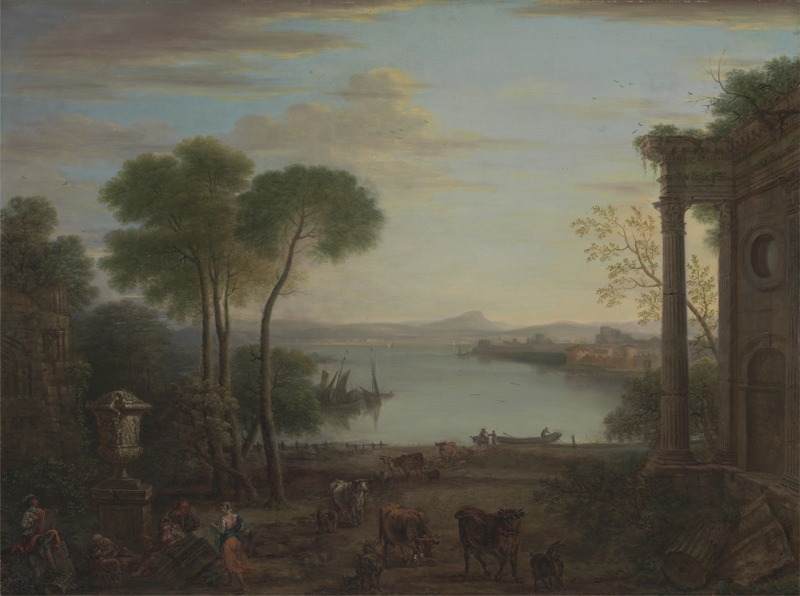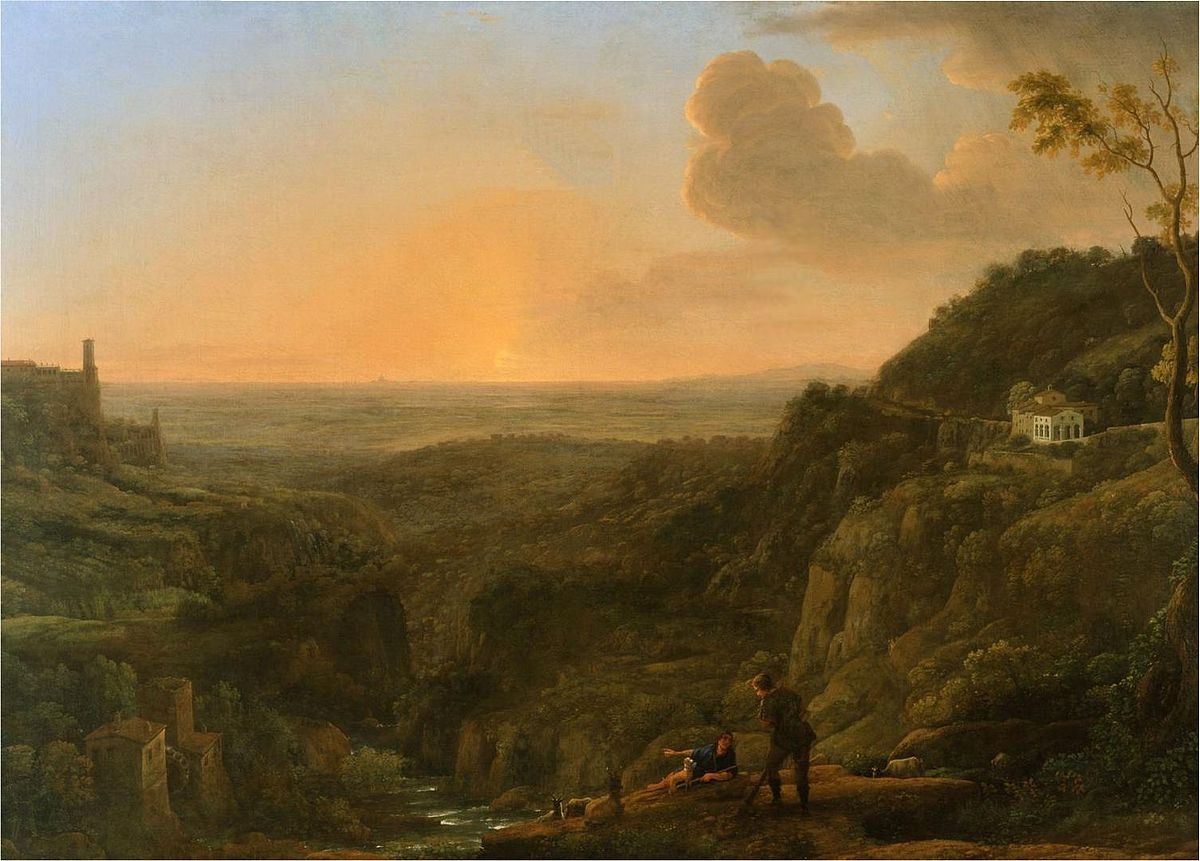What are the Picturesque and Conservation Strategies?
“Picturesque is developed distinctively exactly in proportion to the distance from the center of thought of those points of character in which the sublimity is found” – The lamp of memory by John Ruskin

The idea of the picturesque style of architecture first developed in the late 18th and 19th century which endorsed the idea of aesthetic elegancy in the art forms, buildings, gardens, etc. with the combination of elements of surprise or sublimity. One of the first ideas of picturesque was created by the English writer William Gilpin (1724-1804) in his book essay on prints in which he defined it as “that kind of beauty which is agreeable in the picture”.
In the later years picturesque had two important aspects namely, beauty and sublime. Both of which together in combination said to be picturesque. According to Gilpin, “roughness forms the most essential point of difference between the beautiful and picturesque”. So the roughness or the original form of nature makes it more real and relatable. Its deformity or brokenness is its beauty, its power to make a distinctive impact in the eyes of the viewer. Though picturesque was not written as legalized thought but it was fondly followed in architecture and landscape, creating the impact and relation to the built form, and its environment was completed through it.

The flow was freer in terms of organizing the building form and its aesthetics. Quoting to this, “Designers stressed the aesthetic appeal of asymmetrical massing, verticality, the use of rich colors, and the application of complicated and often exaggerated decorative schemes.” During the later end of the 18th century, this concept of picturesque was reflected commonly in the gothic revival style (1865-1880), Italianate (1870-1895), and second empire style (1870-1900).
Conservation of historical structures and picturesque has a unique association involved. The part of any historical built form in a settlement of a great landscaped garden makes it more dramatic and intense. In a historically built form, the association of the eye which is when traveling through a great foreground to the main object result in picturesque architecture.
The idea of picturesque involves the roughness of nature to be intact and the ruins left in their usual state. That would bring drama to the story of a historical structure. But in the contemporary context, these structures hold up the memory of our past. They carry a legacy and have value in it. Picturesque is an intriguing thought to be implied in art form and structures but leaving the historical structure to decay because it justifies the roughness is not associate able. Here not that conservation is against the picturesque but the association of both in conservation strategies is subjective and depends upon a lot on the condition of that structure.
William Gilpin, Ruins at Canterbury, from Observations on the coasts of Hampshire, Sussex and Kent, relative chiefly to Picturesque Beauty (1774) A piece of Palladian architecture may be elegant in the last degree. The proportion of its parts — the propriety of its ornaments — and the symmetry of the whole may be highly pleasing. But if we introduce it in a picture, it immediately becomes a formal object and ceases to please. Should we wish to give it picturesque beauty, we must use the mallet instead of the chisel; we must beat down one half of it, deface the other, and throw the mutilated members around in heaps.

Nature is manipulative, paintings and art forms can be molded according to the choices of the artist. So if one finds a view a little too smooth or to add a tree here and there one is free to do that but to convert a national importance building into ruin just to pull it in the brackets of picturesque is not justified wholly.
Theories and findings evolve with time. Conservation strategies are much more sensitive towards the buildings than they were in the early English periods. Now a ruin is not just a place, it is in every form is a heritage. On building conservation strategic terms picturesque aesthetic plays a vital role in giving the depth to the subject, that it requires for its usual function- leaving an impact on the viewer. In India, statutory backings are just not enough to keep up with the requirements of what our heritage buildings really want.

There are a lot of loopholes in the conservation strategies altogether that quoting such an intensive term of picturesque into it is not justified. India is rich in its heritage cache what it requires is just a little perspective from the people who claim to own it, who runs the society, who have the power.
Picturesque beauty enhances our vision; it binds us to the end result. It makes us travel all along the route through different layers of foreground, middle ground, and the final object.
Tanya Pandey
M.Arch (B.H.)

Link exchange is nothing else but it is just placing the other person’s webpage link on your page at appropriate
place and other person will also do same in support
of you.
Heya i’m for the first time here. I came across this board and I find It truly useful & it helped me out much.
I hope to provide one thing back and help others such as you aided me.
Hi there! Do you know if they make any plugins to protect
against hackers? I’m kinda paranoid about losing everything I’ve worked hard on. Any suggestions?
Hi there, I found your web site by way of Google even as searching for a comparable topic, your site came up, it appears good.
I’ve bookmarked it in my google bookmarks.
Hi there, simply turned into alert to your blog via Google, and
located that it is really informative. I’m gonna be careful for brussels.
I will appreciate if you happen to continue this
in future. Lots of other folks will likely be benefited out
of your writing. Cheers!